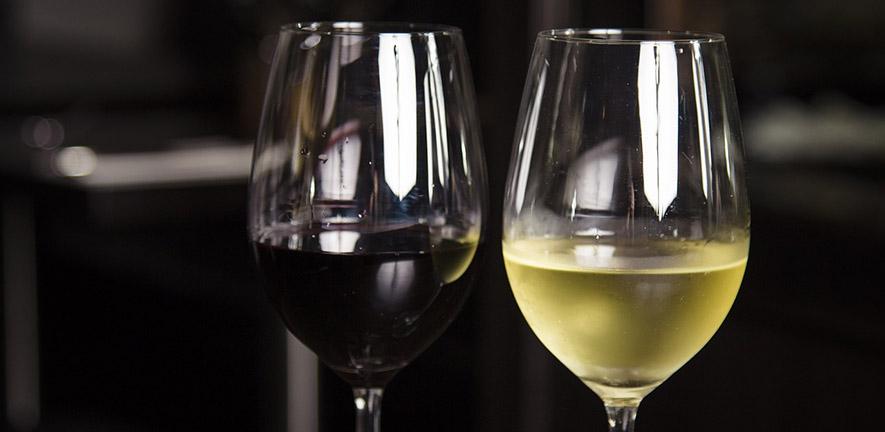
Taking away the largest serving of wine by the glass – in most cases the 250ml option – led to an average reduction in the amount of wine sold at pubs and bars of just under 8%, new research led by a team at the University of Cambridge has discovered.
Taking away the largest serving of wine by the glass – in most cases the 250ml option – led to an average reduction in the amount of wine sold at pubs and bars of just under 8%, new research led by a team at the University of Cambridge has discovered.
When the largest serving size of wine by the glass was unavailable, people shifted towards the smaller options, but didn’t then drink the equivalent amount of wine
Eleni Mantzari
While only modest, the finding could provide one way of nudging customers to drink less alcohol and have an impact at a population level, say the researchers.
Alcohol consumption is the fifth largest contributor to premature death and disease worldwide. In 2016 it was estimated to have caused approximately 3 million deaths worldwide.
There are many factors that influence how much we drink, from advertising to labelling to availability and cost. Previous research from the Behaviour and Health Research Unit at Cambridge has shown that even glass size can influence how much alcohol is consumed.
In research published today in PLOS Medicine, the Cambridge team carried out a study in 21 licensed premises (mainly pubs) in England to see whether removing their largest serving of wine by the glass for four weeks would have an impact on how much wine is consumed. Wine is the most commonly drunk alcoholic drink in the UK and Europe. Twenty of the premises completed the experiment as designed by the researchers and were included in the final analysis.
After adjusting for factors such as day of the week and total revenue, the researchers found that removing the largest wine glass serving led to an average (mean) decrease of 420ml of wine sold per day per venue – equating to a 7.6% decrease.
There was no evidence that sales of beer and cider increased, suggesting that people did not compensate for their reduced wine consumption by drinking more of these alcoholic drinks. There was also no evidence that it affected total daily revenues, implying that participating licensed premises did not lose money as a result of removing the largest serving size for glasses of wine, perhaps due to the higher profit margins of smaller serving sizes of wine. However, it is important to note that the study was not designed to provide statistically meaningful data on these points.
First author Dr Eleni Mantzari, from the University of Cambridge, said: “It looks like when the largest serving size of wine by the glass was unavailable, people shifted towards the smaller options, but didn’t then drink the equivalent amount of wine.
“People tend to consume a specific number of ‘units’ – in this case glasses – regardless of portion size. So, someone might decide at the outset they’ll limit themselves to a couple of glasses of wine, and with less alcohol in each glass they drink less overall.”
Professor Dame Theresa Marteau, the study’s senior author and an Honorary Fellow at Christ’s College Cambridge, added: “It’s worth remembering that no level of alcohol consumption is considered safe for health, with even light consumption contributing to the development of many cancers. Although the reduction in the amount of wine sold at each premise was relatively small, even a small reduction could make a meaningful contribution to population health.”
Evidence suggests that the public prefer information-based interventions, such as health warning labels, to reductions in serving or package sizes. However, in this study, managers at just four of the 21 premises reported receiving complaints from customers.
The researchers note that although the intervention would potentially be acceptable to pub or bar managers, given there was no evidence that it can result in a loss in revenue, a nationwide policy would likely be resisted by the alcohol industry given its potential to reduce sales of targeted drinks. Public support for such a policy would depend on its effectiveness and how clearly this was communicated.
The research was funded by Wellcome.
Reference
Mantzari, E et al. Impact on wine sales of removing the largest serving size by the glass: an A-B-A reversal trial in 21 pubs, bars and restaurants in England. PLOS Medicine; DOI: 10.1371/journal.pmed.1004313

The text in this work is licensed under a Creative Commons Attribution-NonCommercial-ShareAlike 4.0 International License. Images, including our videos, are Copyright ©University of Cambridge and licensors/contributors as identified. All rights reserved. We make our image and video content available in a number of ways – on our main website under its Terms and conditions, and on a range of channels including social media that permit your use and sharing of our content under their respective Terms.




